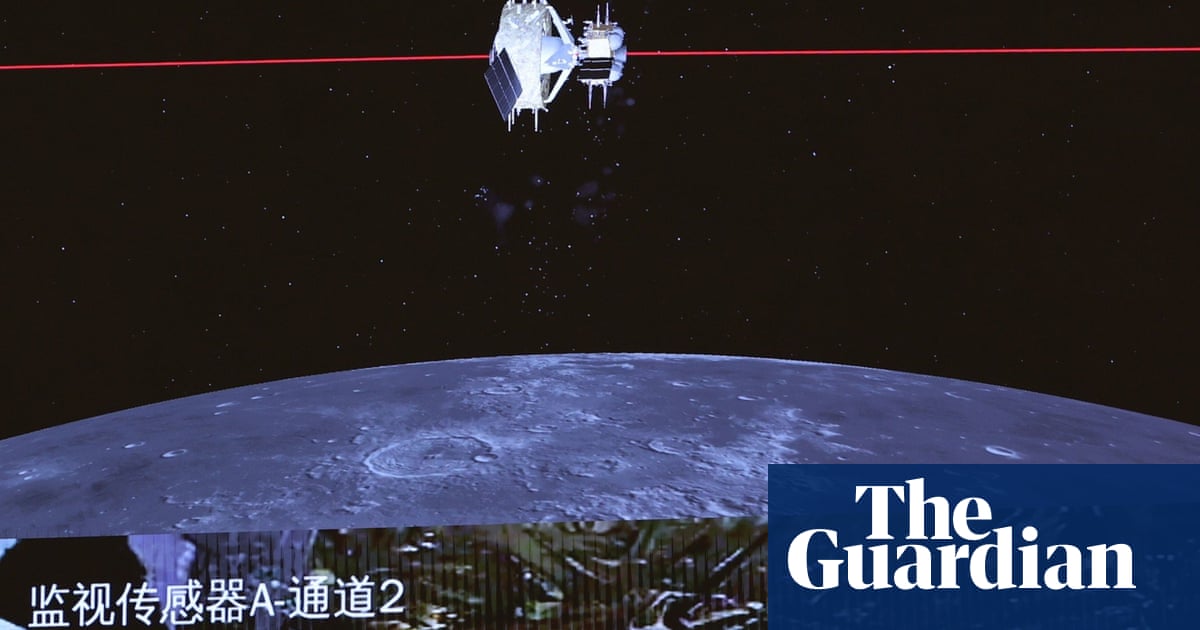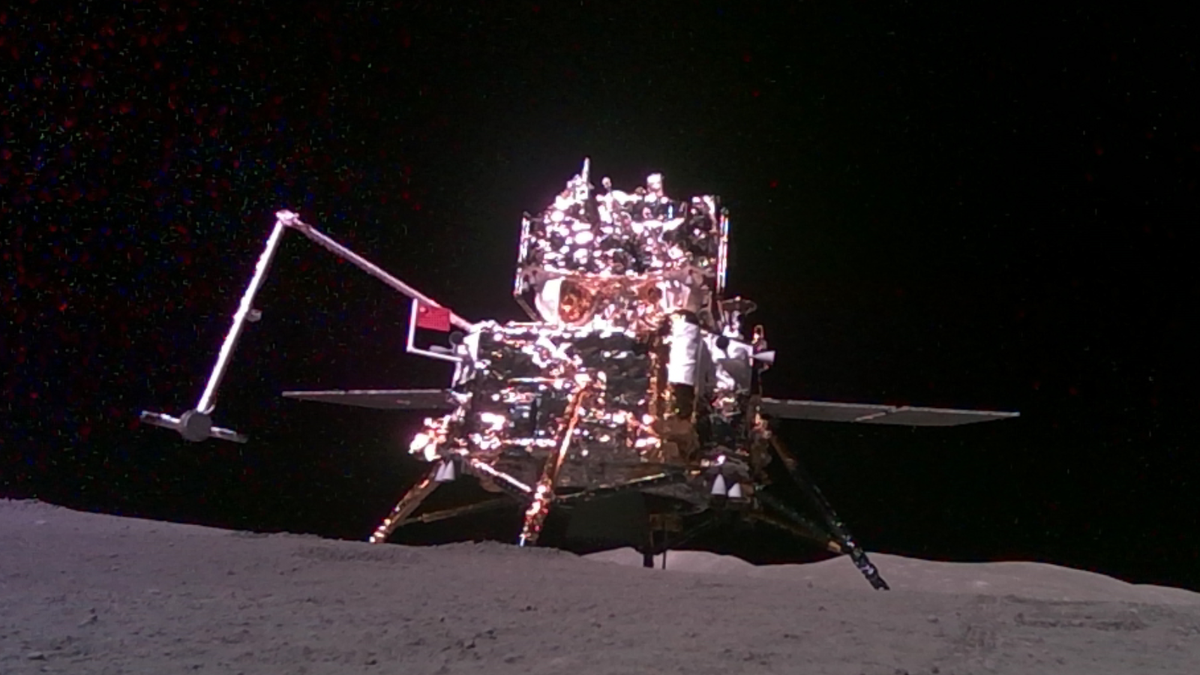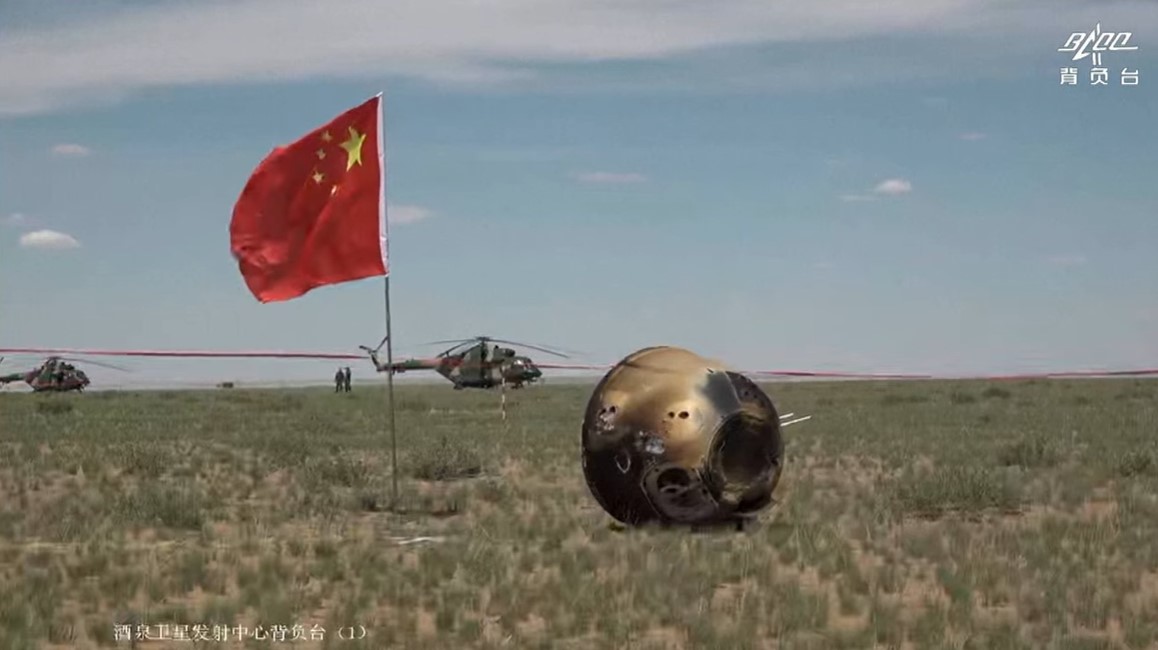China has made history by becoming the first country to successfully retrieve samples from the far side of the moon and bring them back to Earth. The Chang’e 6 mission is named after the Chinese moon goddess.

Also Read: Water Frost Detected on Mars’s Tharsis Volcanoes
The Chang’e-6 mission was launched from the Wenchang Space Launch Center in Hainan Province on May 3, 2024.
Chang’e 6 successfully landed on the moon’s far side, specifically in the South Pole-Aitken (SPA) basin, on June 2, 2024.
The Chang’e 6 mission’s re-entry capsule carrying the lunar samples, safely parachuted back to Earth landing in Inner Mongolia on June 25, 2024.
The SPA basin is one of the oldest and largest impact craters on the moon measuring approximately 1,600 miles in diameter.
The site was chosen due to its potential to provide valuable insights into the moon’s history and the early solar system.
The Chang’e 6 mission’s lander was equipped with a robotic arm and a drill, which were used to collect up to 2 kg of rock and soil samples from the basin.
These samples are particularly valuable because they come from the far side of the moon, an area that remains largely unexplored.
Communication with the far side of the moon is challenging due to its distance and terrain. The Chang’e 6 successful operation required innovative solutions for relaying data back to Earth.
The Chang’e 6 mission included a relay satellite to facilitate communication between the probe and the CNSA.
The primary goal was to gather samples that could help date the SPA basin providing a timeline for lunar cratering.
Understanding the rate of asteroid impacts on the moon could provide insights into similar events on Earth and their effects on the planet’s history.
The samples may contain fragments of the lunar mantle offering clues about the moon’s internal structure and formation.
Scientists hope to better understand why the far side of the moon, with its thicker crust and numerous craters differs from the near side.
The far side of the moon, which always faces away from Earth is vastly different from the near side, which is visible from Earth.
It features rugged terrain including mountains and impact craters, in contrast to the relatively flat plains of the near side.
Also Read: Harvard Scientists Say Aliens May be Living Among us in Disguise
Chinese scientists are eager to analyze the returned samples, which are expected to include 2.5 million-year-old volcanic rock.
The Chang’e 6 lunar probe landed in the South Pole-Aitken Basin, a massive impact crater formed over 4 billion years ago.
Samples from different layers of this basin are anticipated to provide insights into various geological events throughout the moon’s history.
The Chang’e 6 lunar probe launched from Earth on May 3, 2024, and completed a 53-day mission. During its mission, Chang’e 6 drilled into the lunar surface and collected samples from both the surface and deeper layers.
The Chang’e 6 mission is the first to successfully collect and return samples from the moon’s far side. The Chang’e 6 probe also unfurled a Chinese flag on the far side.
Previous lunar missions by the U.S. and the Soviet Union collected samples exclusively from the near side. The Chang’e 6 mission sets a new precedent by exploring and sampling the far side.
China has outlined plans for additional lunar missions aiming to establish a permanent presence on the moon and possibly send astronauts by 2030.
The CNSA plans to collaborate with Roscosmos, the Russian space agency, to build an International Lunar Research Base.
The moon’s far side, potentially rich in resources like water ice, could be crucial for future space missions and even for sustaining human life in space.
Access to these resources may lead to new economic opportunities and technological developments in space mining and resource utilization.
China’s retrieval of lunar samples from the far side is a world-first, building on its earlier success with the Chang’e-5 mission, which brought back samples from the moon’s near side in 2020.
This achievement places China in a select group of nations capable of lunar sample return missions alongside the United States and the former Soviet Union.
The new space race is about reaching the moon and also about securing and utilizing its resources. The United States’ Artemis program aims to return astronauts to the moon by 2026.
Also Read: Chimpanzees Use Medicinal Plants to Treat Illness and Injuries





















